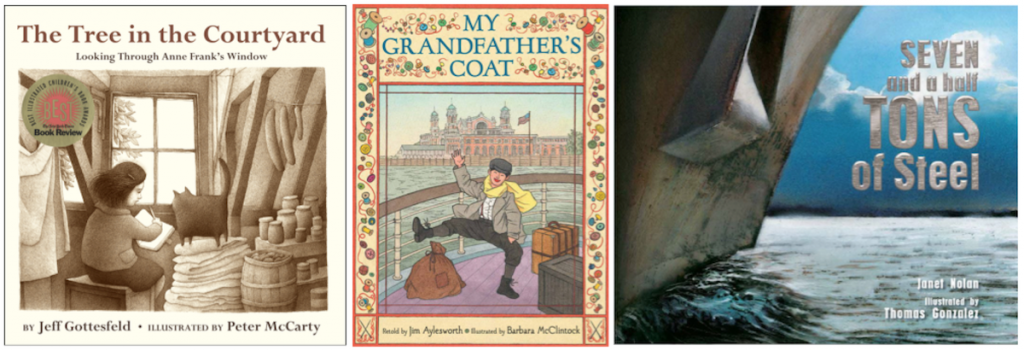Intro:
For this final week we wrap up talking about continuation through adaptability and change in children’s literature. In the last few weeks, we talked about The Tree in the Courtyard, My Grandfather’s Coat, and Seven and a Half Tons of Steel. Here, Dorea Kleker and Seemi Aziz discuss how all three books tie into continuation in children’s literature.
Epilogue:
SEEMI: I agree with the concepts of continuation in children’s literature brought to the fore and highlighted within these texts. If the tree had merely lived its life, its legacy would not survive as it has. If the coat had remained as a coat, it would not have extended through so many generations. And if the steel found in the rubble of the World Trade Center had gone to waste, the memory would not have been alive today in the form of a strong war ship, such as the USS New York. Thus, these texts serve a purpose to keep the narratives alive and bring history to young readers in a positive manner.
DOREA: I’ll admit, when we first began exploring the concept of continuation in children’s literature, I was still thinking of the theme in a simplistic way, much like a dictionary definition: to go on or keep on, to last or endure, to extend. I did not foresee the myriad of ways in which this idea would be explored in our books.
As I look back across our discussion and each of our individual unique “takes” on the theme and the texts, I found myself drawn to a passage from The Tree in the Courtyard:
For the first part of her life, her world was the courtyard. She was not yet tall enough to see beyond the homes, workshops, and factories. Then one spring, she stretched above the orange roofs and took in the beautiful city.
Seemi, your words above feel much like this description of the tree. In each of these books, we see the physical results of shifting vantage points, or extending one’s branches in ways that afford new views or perspectives. Through sewing, building and planting, our books ask their readers to move beyond a dictionary definition of continuation as “remaining the same” to consider the ways that something can continue by looking beyond what is or what was to envision and enact new possibilities.
This is the last installment of September 2017’s My Take/Your Take.The first book we talked about was The Tree in the Courtyard. The second book was My Grandfather’s Coat. The last book we talked about was Seven and a Half Tons of Steel. To follow these continuing conversations, check back every Wednesday.
- Themes: Dorea Kleker, Seemi Aziz
- Descriptors: My Take/Your Take

